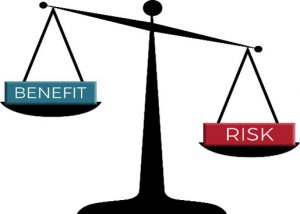Are Stories Worth Their Weight in Gold?
For many humanitarian aid organizations, persuasive narratives equate to much needed currency. Sharing stories that go much further than citing statistical facts and instead crafting narratives that skillfully tugs at the reader’s heart is important to many aid communicators.

When it comes to aid work in many regions, the use of Information and Communication Technologies (ICTs) have become instrumental in the hands of many humanitarian actors. As this medium is being utilized more and more as a tool for development in which stories can rapidly be shared, the empowering nature of digital technology is also facing many challenges, one being the way misinformation can quickly and easily be spread before effectively being monitored. Misinformation or lack of transparency among communicators has not only fueled conspiracies, especially in recent times, but has also allowed for the provocation by political and anti-political activists to spread rampantly. With this said and taking into account the fact that even though transparency, on its own may not solve challenges. Transparent information, however, may be essential in creating trust and goodwill among all participants.
Although it may be the responsibility of the aid communicator to serve both the reader and the actors that pay the bills, unethical storytelling, and a lack of transparency by the storyteller can be an obstacle in achieving positive social change and development. Regardless of the fact that misinformation or a lack of transparency on the part of aid communicators can at times make fundraising event more beneficial, it can also have a pronounced impact on the integrity of the organization itself. This weakness in the link of accountability by the communicator affects both the donor’s trust and the public’s trust. As a result of this, aid communicators’ words are rightfully scrutinized and commented upon because these are the said words that are also acted upon.
Digital Progress vs Digital Slavery

ICT4D not only provides a framework for leveraging information across numerous platforms and across many regions, but has also rapidly develop a dynamic digital landscape that supports the collection and sharing of key information among agencies around the world. This catalyst for social change and development has become a fundamental component in the humanitarian world. As humanitarian aids search for tools and applications to serve the underserved, technological advancements are quickly reaching out its hand to help aid organizations connect, integrate and distribute information.
As we observe the contributions new technological innovations are making, especially in its campaign towards globalization by supplying the infrastructures that allows us all to connect to each other, this advanced infrastructure has also become a place where some stories being told appear to be inherently self-centered. Stories filled with messages that are purely designed to persuade and motive doners into action. Weaved into narratives that attempt to address disheartening issues are negative assumptions and prejudices that echo colonialist and imperialist beliefs. Hidden within messages are shallow depictions that perpetuate stereotypes and the illumination of the suffering ‘Other’. As digital platforms are being used to disperse storylines written with the mere intent to grab attention, the risk that many face is the widening of gaps between those who have labelled themselves ‘developed’ and the rest of the world.
In addition to this, is also the fact that the vulnerable is often the ones who are affected the most, as their real-life stories become fictionalized narratives. Stories designed specifically to allow every development practitioner to become a hero by just one click. Stories that narrate moving accounts of traumatic life occurrences whilst totally neglecting the ethical dilemmas associated with women and children rights. Stories that place vulnerable individuals at risk of becoming even further marginalized. Stories that are repeatedly perpetuating assumptions and emphasizing inequalities as savior communicators enjoys the presumptuous superiority of being authors.
The Right to Truthful Information
Even though on one hand storytelling may be one of the most powerful tools used to help link and unify groups, communities, societies and even the global world, the misrepresentation of the well-intentioned aid communicator to move agencies into action, or to convince donors to help those desperately in need sometimes causes storytellers to blur lines between honest depictions and persuasive narratives. Fully aware that inspiring narratives not only tap into our emotions, but can move us into action, aid communicators are sometimes willing to sacrifice the said persons they are willing to help in order to convince donors.

Regardless of the fact that ethical storytelling may require us to honor ourselves and others in the stories that we tell, the power behind deceiving the audience has allowed many communicators to master the art of playing with the readers’ trust.
Honestly, is it really dishonest to improvise or embellish stories in order to grab the attention of much needed assistance? Afterall a great number of humanitarian communicators are narrators who must themselves become testifiers. As their documentations become vivid portrayal of the ‘suffering other’ they are intending to help, these self-centered communicators whose stories serve a calculated purpose is also able to entertain the self-satisfied consumers who can stand at a distance and view both the ‘savior’ and ‘the primitive other’.
Furthermore, whilst manipulation by the humanitarian communicator is nothing new, as aid work has long been subjected to manipulation by governments, private donors, advocates, public opinion, and by humanitarian organizations themselves. The effect of manipulative and persuasive stories, however, appears to carry with it a cycle whereby victims become protagonists, who are instrumental tools used by aid profiteers or antagonists, who believe that by amplifying or exaggerating the suffering of the destitute they are able to not only increase fundings, but also become newsworthy.
On the other side of the coin, is it that we as readers are suckers for tragic stories, do we enjoy mitigated tension, are we accustomed to the digestion of propagandic stories, or are we too, caught up in the act of wanting to be ‘hero aids’?
References
Image 1: retrieve from: https://www.pinclipart.com/downpngs/iixohTw_polypharmacy-exists-when-the-risk-of-a-medication/
Image 2: retrieve from: <a href=’https://www.freepik.com/photos/technology’>Technology photo created by freepik – www.freepik.com</a>
Image 3: retrieve from: <a href=’https://www.freepik.com/vectors/business’>Business vector created by pch.vector – www.freepik.com</a>

